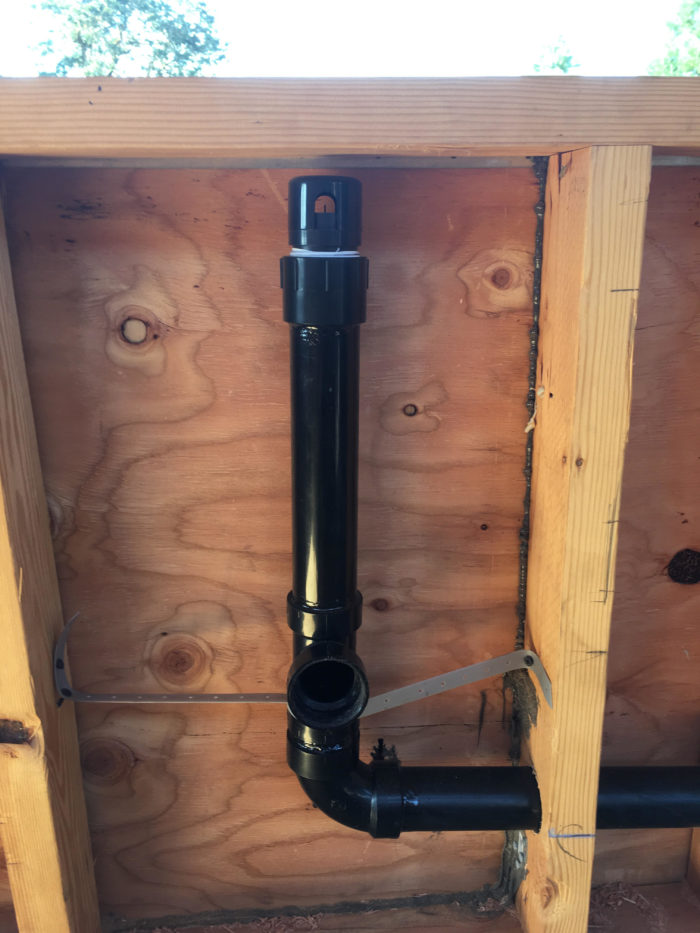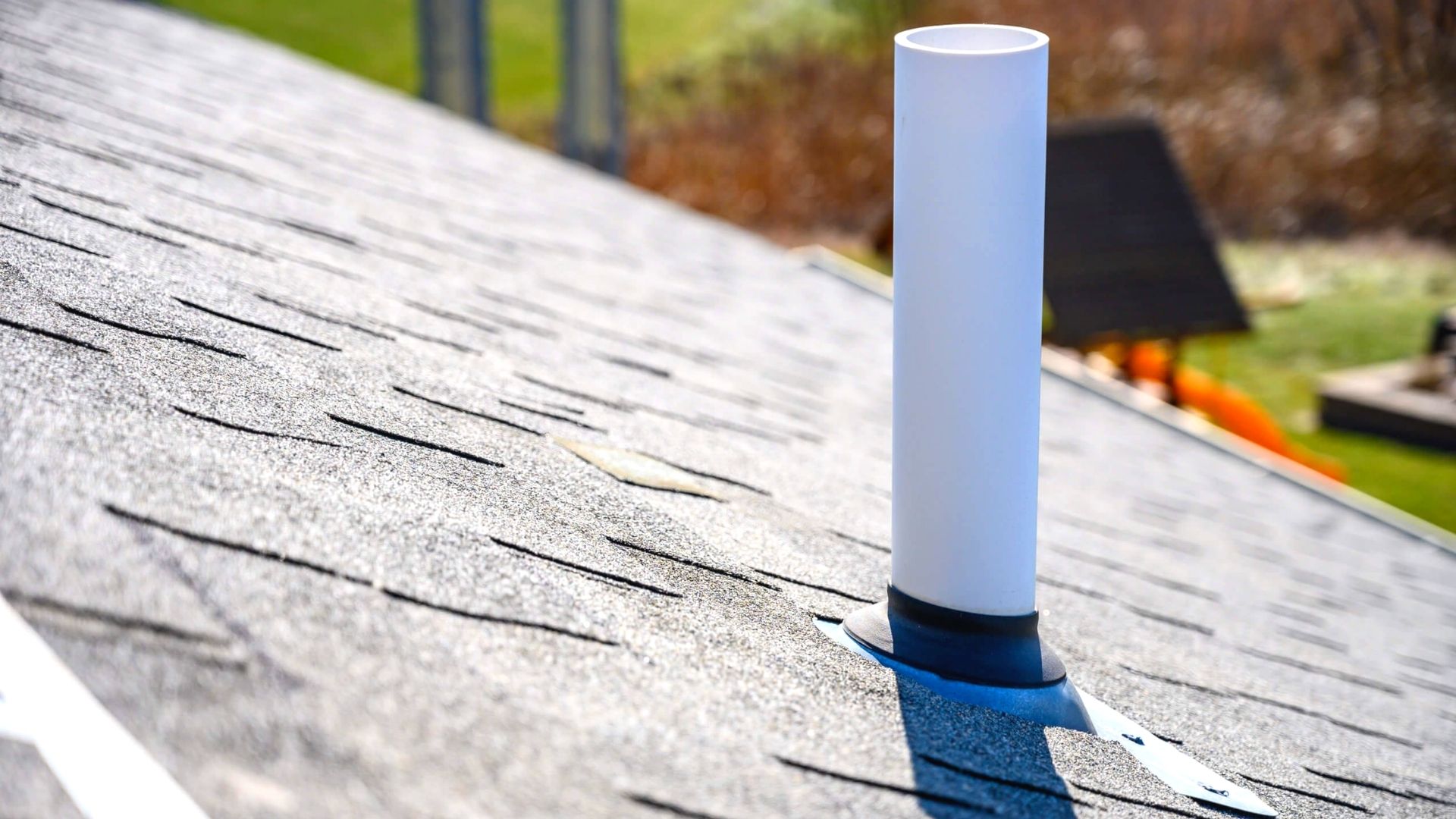Adequate Ventilation in Plumbing Systems: How It Matters
Adequate Ventilation in Plumbing Systems: How It Matters
Blog Article
Were you hunting for help and advice concerning The Upsides of Proper Ventilation in Plumbing Design?

Appropriate ventilation in pipes systems is typically ignored, yet it is vital for preserving the capability and safety of your home's plumbing. Ventilation assists manage air pressure, stop the build-up of hazardous gases, and make certain the efficient removal of waste. In this overview, we will certainly discover the value of proper plumbing ventilation, how it works, and the benefits it gives your pipes system.
Comprehending Air Flow in Pipes
Air flow in pipes refers to the network of pipes that allow air to flow through the water drainage system. These vents offer numerous functions, including regulating air pressure within the pipelines, protecting against sewage system gases from going into the home, and aiding in the smooth circulation of wastewater.
Just How Ventilation Functions in Plumbing Equipments
Atmospheric Pressure Policy
Proper ventilation maintains balanced atmospheric pressure within the plumbing system. When water moves with pipes, it displaces air. Without sufficient ventilation, this displacement can develop unfavorable pressure, leading to reduce drains or siphoning of water from traps, which can create unpleasant smells to seep right into the home.
Avoiding Sewage System Gas Accumulation
Among the most essential functions of plumbing vents is to stop drain gases, such as methane and hydrogen sulfide, from collecting within the home. These gases can pose major health and wellness threats and are highly combustible. Vent pipelines allow these gases to get away securely outdoors.
Aiding in Waste Removal
Air flow assists in the effective removal of wastewater by preventing airlocks in the drainage system. When air can flow openly via the vents, it permits water and waste to move smoothly with the pipelines, decreasing the danger of clogs and backups.
Sorts Of Plumbing Vents
Main Heap Vent
The main pile air vent, additionally referred to as the air vent pile, is the primary vent in a plumbing system. It expands from the main drainpipe align with the roof, enabling gases to run away and fresh air to go into the system.
Branch Vent
Branch vents connect to the primary pile air vent and serve private components, such as sinks, toilets, and showers. These vents make sure that each component has adequate ventilation to work effectively.
Air Admission Valve (AAV).
An Air Admittance Valve (AAV) is a one-way valve that allows air to enter the plumbing system without the requirement for a standard air vent pipeline extending via the roofing system. AAVs are typically used in restorations or areas where installing a basic air vent is not practical.
Indications of Poor Ventilation in Pipes.
Slow Draining Fixtures.
If your sinks, bathtubs, or toilets are draining pipes gradually, maybe an indicator of bad ventilation. Poor air circulation can create a vacuum cleaner result, making it challenging for water to drain appropriately.
Gurgling Seems.
Gurgling audios originating from drains pipes are often an outcome of air being sucked through water catches because of adverse pressure in the pipelines. This is a clear indicator of inadequate air flow.
Undesirable Odors.
Drain smells inside your home are a warning that your pipes system is not properly ventilated. This might indicate that sewage system gases are not being sufficiently aired vent outside, bring about possibly hazardous conditions.
Common Air Flow Blunders.
Poor Vent Sizing.
Making use of undersized air vent pipes can cause bad air flow and stress inequalities in the system. It's vital to use vents that meet the details requirements of your pipes system.
Improper Vent Placement.
Placing vents as well much from the components they serve can reduce their effectiveness. Correct placement guarantees that air can flow freely and efficiently via the system.
Ignoring Code Demands.
Building codes supply particular guidelines for pipes air flow. Disregarding these codes can lead to a system that fails to operate appropriately and might result in costly repair services or carcinogen.
Benefits of Appropriate Air Flow.
Enhanced System Efficiency.
Properly ventilated pipes systems operate a lot more efficiently, with less clogs, faster draining pipes, and less pressure on the pipelines. This performance prolongs the life-span of the plumbing system.
Improved Air Quality.
By stopping sewage system gases from entering your home, appropriate air flow adds to far better interior air top quality, making your living setting healthier and more comfy.
Protecting Against Water Damages.
Appropriate air flow assists avoid water from being siphoned out of traps, which can bring about sewage system gases going into the home and creating water damage gradually.
Steps to Make Sure Appropriate Ventilation.
Consulting Plumbing Codes.
Constantly speak with local pipes codes when creating or customizing your pipes system. These codes supply the required standards for proper airing vent and ensure your system satisfies safety and security requirements.
Normal Inspection and Maintenance.
Routine examinations can aid identify potential ventilation issues before they become major troubles. Upkeep jobs, such as cleansing air vent pipes and looking for blockages, are vital for maintaining the system in good working order.
Specialist Setup.
For brand-new installments or significant alterations, it's a good idea to employ a professional plumber. They have the experience to ensure the ventilation system is appropriately developed and set up according to code.
Final thought.
Proper ventilation is a critical part of any type of pipes system, making sure that it functions effectively and securely. By understanding the importance of air flow, acknowledging the indications of poor ventilation, and taking steps to keep your system, you can avoid pricey problems and protect your home's air top quality.
4 Things You Should Know About Your Plumbing Vents
What Plumbing Vents Are
Also called a vent stack, a plumbing vent is a vertical pipe attached to your drain line that runs through your roof. The plumbing vent pipe, or plumbing air vent, removes gas and odors from your plumbing system and allows fresh air to enter the pipes, helping the water to flow out of the drain pipes.
What Plumbing Vents Do
Plumbing vents have two basic functions. One of which is to allow unpleasant smelling wastewater and sewer gasses to escape your plumbing system instead of entering your home. Plumbing vent pipes are typically located on roofs, away from windows, to ensure the fumes exit the home completely.
The other function of the plumbing vent is to move fresh air into your plumbing system. This helps move water through every plumbing fixture in your house, like toilets and sink drains. Think of the way in which you need to let a little air into the bottle as you pour soda in order to make the drink flow smoothly.
Different Types of Plumbing Vents
True vent: This is the most common vent option. In simplest terms, a true vent is a vertical pipe attached to your drain line that exits through the roof. They often function as the main vent that other fixtures can connect to. Re-vent pipe or auxiliary vent: Attached to the drain line near specific plumbing fixtures, re-vent pipes run up and over to connect to the main vent. Common vent: Two plumbing fixtures installed on opposite sides of a wall are typically tied into the vent stack using something known as a sanitary cross. Wet vent: This venting option operates as a drain pipe and a vent at the same time. Wet vent drainage systems drain water from one fixture while venting the air from another. Although they’ve been used for over 100 years, wet vent systems have only recently been added to the plumbing code in many areas. If you’re planning on installing one in a bathroom remodel, make sure you check your local code prior to construction. Loop vent: For free-standing fixtures like kitchen island sinks, loop vents are ideal. These vent pipes run under the floor, rise from the P-trap, and create a loop inside the cabinet sink. Air admittance valve: An AAV is a one-way mechanical valve typically installed at the site of the plumbing fixture. AAVs allow venting to occur without having to tie into a larger venting system. They’re ideal for venting fixtures where you aren’t able to easily connect to an existing vent system. Common Plumbing Vent Issues
Although vent pipes typically don’t have water flowing through them, they’re still subject to many typical plumbing issues. For example, clogs are one of the most common problems associated with sewer vent pipes. If your vent pipe gets clogged, all of your plumbing fixtures tied into the vent stack will be affected.
A sink with a slow drain that bubbles and gurgles or a strong sewage smell around your toilet are both indicators that your toilet vent pipe is clogged. Because most vent pipes exit through the roof, old leaves, twigs or even a bird’s nest could be clogging the pipe.
Clogs in your vent pipe system cause a buildup of negative pressure, meaning that water won’t be able to flow out of your home very well. It’s similar to putting your finger over the opening of a straw to trap water inside. When you remove your finger, the water is able to flow out of the straw.
If you suspect you have any blockage in your vent, make sure you have a professional come examine the situation. Left unchecked, a blocked air vent can lead to other costly repairs, like leaks and sediment buildup.
Under Pressure
Pipe vents are essential aspects of a home’s plumbing system. Owning a home means learning about all sorts of things you never put much thought into before. But by understanding as much as you can about the important systems of your home, you can keep those budgets intact and those anxiety levels low.
https://www.homeserve.com/en-us/blog/home-improvement/plumbing-vents/

As a reader about What Is a Plumbing Vent and Why Is It Important, I was thinking sharing that piece of content was really helpful. I beg you set aside a second to promote this content if you enjoyed it. Thank you so much for going through it.
This Page Report this page